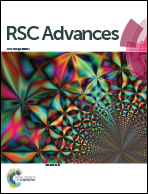Thermal stability and decomposition of lithium bis(fluorosulfonyl)imide (LiFSI) salts
Abstract
The demand for lithium-ion battery (LIB) electrolytes with improved thermal stabilities, and maintained high ionic conductivities and electrochemical stabilities, has been the driving force behind the use of the lithium bis(fluorosulfonyl)imide (LiFSI) salt as a possible replacement for LiPF6. However, contradictory results have questioned its promising thermal stability and noncorrosive properties. Here the performance of three commercial LiFSI salts is compared with the focus on thermal stability and phase transitions together with a vibrational spectroscopy based assessment of the salt purity and decomposition products. The salts are found to differ significantly in their thermal stabilities as determined by both dynamic and isothermal TGA. In contrast, the FT-IR spectra of the salts are almost identical, while several additional bands are identified in the Raman spectra of the least stable salt. The latter allows for a discussion of the origin and role of salt impurities for the observed thermal (in-)stability. Overall the three salts show differences, but these differences are not straightforward to couple to any changes in the performance of Li/LiFePO4 cells using electrolytes based on these salts, but may nevertheless have implications on battery life-length and for application in various other battery technologies.



 Please wait while we load your content...
Please wait while we load your content...